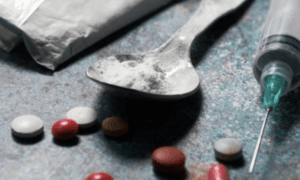Two popular brands of organic kids’ snack products have high levels of lead, with one item exceeding the maximum allowable limit, according to a new report by Consumer Reports (CR).
The organization tested six kids’ snack items made from sorghum or cassava for the presence of lead. Two products each from Lesser Evil, Serenity Kids, and Once Upon A Farm brands were tested. Lead poisoning is a big concern as it poses a risk of childhood developmental issues like autism, lower IQ, and attention-deficit/hyperactivity disorder.
The organization measured lead presence in the items as a percentage of California’s maximum allowable dose level (MADL). This measure was used because there is currently no federal limit for lead in most foods.
Lesser Evil’s two products performed the worst, with its “Lil‘ Puffs Intergalactic Voyager Veggie Blend” showing a lead level at 112 percent of the allowable level. Lead presence in “Lil’ Puffs Sweet Potato Apple Asteroid” was 60 percent.
Serenity Kids’s “Grain Free Puffs, Tomato & Herbs, Bone Broth” had a lead level of 53 percent, while lead presence in “Grain Free Puffs, Carrot & Beet” was 17 percent.
Products from Once Upon A Farm had the lowest lead level of the bunch, with 6 percent found in “Organic Fruit & Veggie Puffs, Apple, Sweet Potato & Coconut” and 3 percent in “Organic Fruit & Veggie Puffs, Mango, Carrot & Coconut.”
Lesser Evil and Serenity Kids, two brands with the highest lead levels, used organic cassava flour as the main ingredient. Once Upon A Farm used organic sorghum flour.
Jennie Shen, director of brand marketing for Serenity Kids, told CR that the firm was working with suppliers to cut down heavy metal content. However, heavy metals are “prevalent in our food system.”
Sami Rosnov, chief of operations at Corner Market Communications, representing Lesser Evil, pointed out that lead occurs in nature from long-term pollution and contamination of water and soil.
Company Responses, FDA Action
Ms. Shen defended the products of Serenity Kids, saying the “puffs are and have always been safe for consumption,” in an emailed statement to The Epoch Times.Since there are no national standards for heavy metals in baby food, the company holds its products against the California Prop 65 exposure thresholds for heavy metals, said Ms. Shen. These limits are among the lowest levels in the country, but even then, the products in question are “compliant” with Prop 65.
“All of our products test well below the Maximum Allowable Dose Levels (MADLs) established by California Proposition 65. Specifically, the reference to ‘53 percent and 17 percent of MADL’ in regards to our Carrot & Beet and Tomato & Herb Grain Free Puffs show that these products have results that tested under the MADL,” she added.
FDA told Consumer Reports that it plans to set lead limits in baby foods this year, with limits for fruit juices scheduled for 2025, according to the report.
However, the agency is still deciding how to regulate the presence of heavy metals in snack products. FDA suggested it could take action against manufacturers that sell items containing high levels of lead.
“The agency needs to take a hard look at the snacks parents feed their children, and make sure they don’t have dangerous levels of lead and other contaminants,” Mr. Rogers said.
Legislation Against Heavy Metals
Lawmakers are taking steps to counter the presence of heavy metals in foods consumed by infants. In May, Sens. Amy Klobuchar (D-Minn.) and Tammy Duckworth (D-Ill.) introduced the Baby Food Safety Act of 2024, which requires the FDA to enforce “scientifically-established limits on heavy metals in commercial infant and toddler food.”The bill also raises the standards for manufacturer sampling and testing for contaminants in both domestically processed and imported food items. It aims to bring greater transparency in the rate of food facility inspections done by the FDA.
“My legislation will empower the FDA to set limits for the levels of lead, cadmium, mercury, and inorganic arsenic in baby food with meaningful deadlines, while mandating sampling, testing, and reporting requirements for baby food manufacturers,” said Rep. Raja Krishnamoorthi (D-Ill.) who introduced the bill in the House.
Three years ago, Mr. Krishnamoorthi released a report revealing “dangerously high levels” of toxic heavy metals in some of the leading baby foods.
“Those same neurotoxins are still present at levels that risk the health and well-being of our children,” he said.
The agency has not identified a safe blood lead level (BLL) in children. “Even low levels of lead in blood are associated with developmental delays, difficulty learning, and behavioral issues. The effects of lead poisoning can be permanent and disabling,” it said.
The CDC typically uses a blood lead reference value (BLRV) of 3.5 micrograms per deciliter, which it claims helps in identifying children with relatively higher lead levels. It estimates that roughly 500,000 children in the United States have BLLs at or above the BLRV level.






